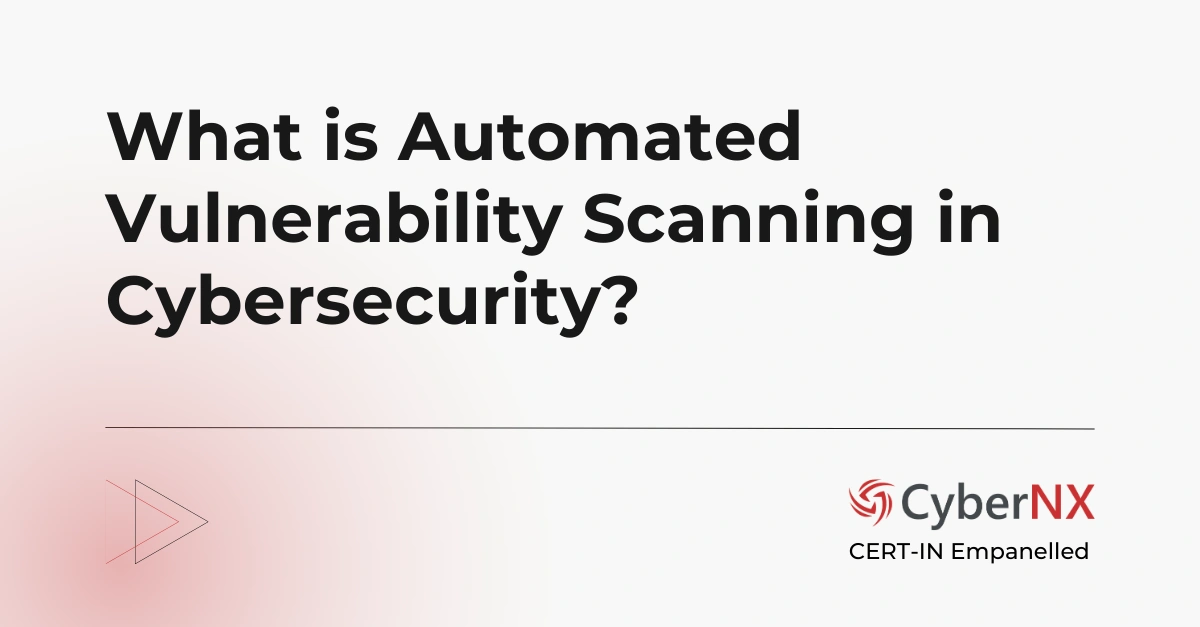In cybersecurity, many acronyms and almost similar sounding words could cause confusion. Risk assessment and vulnerability assessment are among them. One look, and both may seem to do the same thing – uncover loopholes in your digital assets. But you will have to look closer to understand that their purposes differ.
Knowing the difference between risk assessment vs vulnerability assessment is important. Because it directly impacts how you protect sensitive data, allocate budget and prioritize what needs fixing first.
What is Vulnerability Assessment?
Think of a vulnerability assessment as a diagnostic scan for your IT systems. It’s a systematic process that identifies, measures and reports security flaws in your infrastructure, applications and devices.
Common examples include:
- Outdated software versions that haven’t been patched
- Misconfigured firewalls or cloud storage buckets
- Weak authentication mechanisms
- Known flaws in third-party libraries or APIs
The goal is to create a comprehensive list of “what’s broken.” Vulnerability assessments often use automated tools that scan large environments quickly and assign severity scores (like CVSS). The report is largely technical, best suited for IT and security teams who will carry out the remediation. In short: a vulnerability assessment shows you the symptoms.
Related Content: Vulnerability Assessment Guide
What is a Risk Assessment?
A risk assessment zooms out from the technical weeds and looks at the bigger picture. Instead of just finding flaws, it evaluates:
- Likelihood: How likely is it that a threat actor will exploit this weakness?
- Impact: If exploited, what would it cost the business – financially, reputationally, or legally
- Context: Is the system mission-critical? Does it hold regulated data?
The output is not just a long list of issues. It’s a prioritized view of risks, often paired with mitigation strategies. Risk assessments involve business leaders, compliance officers, and IT managers because they bridge technical reality with business impact. In short: a risk assessment tells you which symptoms actually matter.
Risk Assessment vs Vulnerability Assessment: The Core Differences
To make the comparison crystal clear, here are the biggest distinctions:
| ASPECT | VULNERABILITY ASSESSMENT | RISK ASSESSMENT |
| Focus | Technical flaws and weaknesses | Business impact and likelihood of threats |
| Output | List of vulnerabilities with severity ratings | Prioritized risks with recommended actions |
| Audience | IT and security operations | Business leaders, CISOs, compliance teams |
| Frequency | Regular (weekly, monthly, continuous scans) | Periodic (quarterly, annually, or triggered by change) |
Put simply, vulnerability assessment is about finding issues, while risk assessment is about deciding which issues to tackle first.
Why You May Need Both
When companies search for “risk Assessment vs vulnerability Assessment,” they often hope one will replace the other. The reality is, they complement each other.
- Without vulnerability assessments, you won’t know where the weaknesses are.
- Without risk assessments, you won’t know which weaknesses are truly dangerous to your business.
For example:
- A vulnerability scan flags 200 issues in your network.
- A risk assessment highlights that 5 of those directly affect customer data and carry regulatory implications.
- Your remediation team now knows exactly where to focus first.
This partnership is what turns raw data into actionable strategy.
Practical Next Steps
If you want to strengthen your security posture without being overwhelmed, here’s how to put both assessments to work:
- Schedule Regular Vulnerability Scans: Use automated tools to continuously check your infrastructure and applications.
- Conduct Periodic Risk Assessments: Align them with major business milestones like product launches, cloud migrations, or compliance audits.
- Prioritize by Risk, Not Just Severity: A “medium” vulnerability on a critical database may deserve faster attention than a “high” vulnerability on a test server.
- Integrate Findings into Governance: Make sure vulnerability scan results feed into your risk register so leadership decisions are evidence-driven.
Conclusion
Cybersecurity isn’t just about knowing what’s wrong – it’s about knowing what matters most. A vulnerability assessment tells you what flaws exist, while a risk assessment tells you how those flaws could harm your business.
Instead of choosing one over the other, use both in tandem. Together, they ensure you’re not just reacting to technical noise but making smart, business-aligned security decisions.
When viewed through this lens, the debate around risk Assessment vs vulnerability Assessment becomes clear: it’s not a choice, but a collaboration that keeps your organization secure, resilient, and ready for what’s next. Contact us today for vulnerability assessment services.
Risk Assessment vs Vulnerability Assessment FAQs
What is the main difference between a risk assessment and a vulnerability assessment?
A vulnerability assessment identifies technical flaws, while a risk assessment evaluates the likelihood and business impact of those flaws. Together, they provide a complete security view.
Do organizations need both risk assessments and vulnerability assessments?
Yes. Vulnerability assessments reveal weaknesses, and risk assessments help prioritize them. Using both ensures resources are directed toward the most critical threats.
How often should vulnerability and risk assessments be conducted?
Vulnerability assessments are typically run regularly – weekly, monthly, or continuously. Risk assessments are performed periodically, often annually or during major business changes.
Which is better for compliance: risk assessment or vulnerability assessment?
Compliance frameworks usually require both. Vulnerability Compliance prove that systems are checked for weaknesses, while risk assessments demonstrate business-level risk management.





